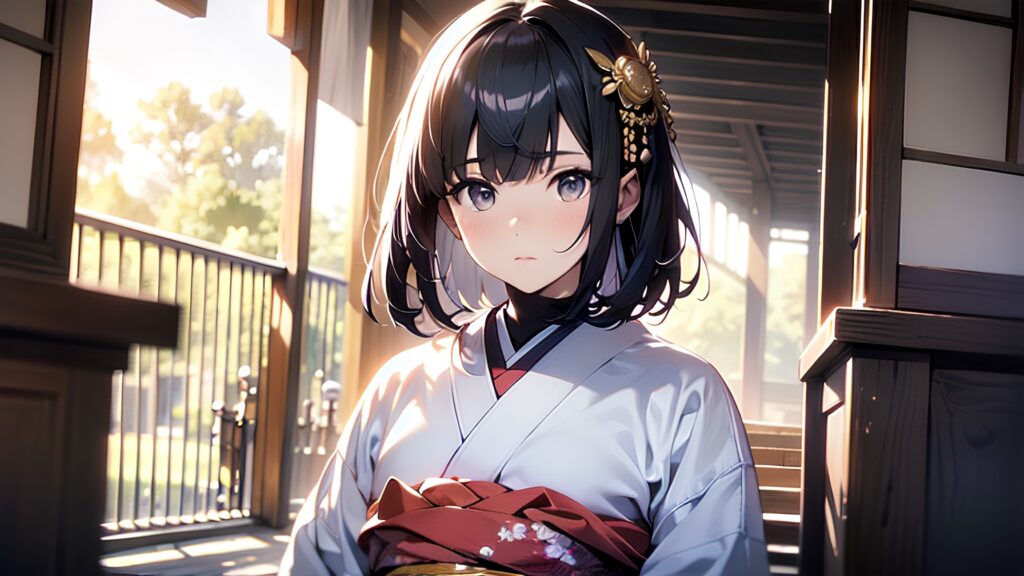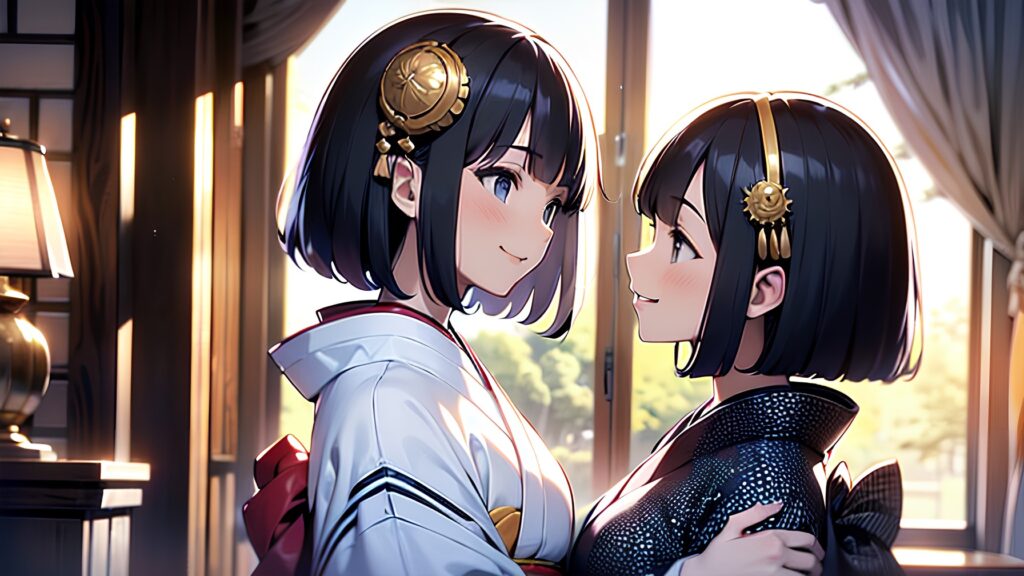神様への感謝の参拝

こんにちは♪
ずっと前から訪れたかった伊勢神宮へ、ようやくお参りに行くことができました。
若い頃に一度訪れて以来だったので、大人になった今、改めて感じることや知らなかったことがたくさんあり、新たな発見に満ちた参拝となりました。
午前中は少し雨が降っていましたが、午後からは晴れ、清々しい空気の中で参拝できたことに感謝しています。
本来であれば、外宮から参拝し、その後に内宮へ向かうのが正式な順序ですが、時間の都合で今回は内宮のみをお参りしました。神様に少し申し訳ない気持ちもありつつ、心を込めて参拝させていただきました。
駐車場に車を停めて川沿いを歩いて内宮に向かう途中、満開の桜が目に飛び込んできました。過去に出会ったことのないような美しい光景に、心が震えるほど感動しました。
家族で宇治橋の鳥居の前で一礼し、右側通行で橋を渡ります。橋の上から見える景色は、山々の緑、桜の花、川の水面がきらきらと輝き、とても幻想的でした。
橋を渡ると神苑が見えてきます。雨上がりのしっとりとした玉砂利をゆっくりと進み、手水舎で手を清めました。慣れない所作に少し戸惑いながらも、丁寧に心を整えて進んでいきます。
さらに奥へ進むと、五十鈴川(御手洗場)にたどり着きます。子どもたちと一緒に、透き通った水に手を浸し、小さな魚が泳ぐ様子を眺めながら、水の冷たさを肌で感じました。
そのすぐそばにあるのが瀧祭神。五十鈴川の守り神様です。手を合わせて感謝の気持ちを伝えました。
お参りの作法は二礼二拍手一礼。住所と名前をお伝えし、お願い事ではなく、日々の暮らしへの感謝を心から申し上げました。
神聖な樹々と澄んだ空気を感じながら、風日祈宮(かざひのみや)へと足を進めます。風日祈宮は雨風を司る神様を祀る別宮です。
風日祈宮橋を渡り、右に回り込むように歩くと、静寂と神秘に包まれた風日祈宮が姿を現しました。前には数人の参拝者が列を作っていました。
順番が来て、ここでも二礼二拍手。住所と名前を伝え、感謝の気持ちを丁寧にお伝えしました。
続いて正宮を目指します。ここは天照大御神をお祀りしている最も神聖な場所。お賽銭はせず、写真撮影も禁止。そして、お願い事をするのではなく、神様に感謝の気持ちを伝える場所とされています。
子どもたちにもその意味を伝えながら、正宮へと向かいます。途中、大きな杉の木が力強く立っており、手を触れてご利益を得ようとしている人も見かけましたが、それは控えるべき行為だと事前に知っていたので、子どもたちにも触れないように説明しました。きちんと理解してくれました。
やがて石の階段の前に到着。神聖な空気が一層濃くなり、一礼して一歩ずつ階段を上がっていきます。
上りきると警備の方から「立ち止まらずにお進みください」と声をかけられ、少しずつ進みながら参拝の順を待ちました。
ついに正宮正面に到着。白い布の向こうにうっすらと見える御殿の景色は、言葉では言い表せないほど神秘的でした。
深く二礼二拍手をし、住所と名前をお伝えし、
「日々、食べるものや住む場所に困ることなく、安心して暮らせていることに心より感謝いたします」
と目を閉じて心から神様にお伝えしました。すると、心がすっと軽くなるような、不思議な感覚がありました。
参拝を終え、次に向かったのは古殿地。これは式年遷宮によって以前使用されていた社殿の跡地で、「こでんち」と呼ばれます。次の遷宮までの20年間、神聖な空間として静かに守られています。
「何もないのに、何かがあるように感じる場所」
それが、伊勢神宮の古殿地の不思議な魅力なのだと思います。
神様が20年間鎮まっていた場所には、人々の祈りや想い、職人たちの魂が静かに宿っているようでした。そこには目に見えるものではなく、「気」や「場の力」のような、日本独自の自然観や空間への敬意が息づいているように感じられます。
実は、遷宮の際、神様が新たな社殿へと遷る儀式も夜にひっそりと、誰にも見られないように行われるのだそうです。
神様が「もの」ではなく、目に見えない存在であるという日本の信仰が徹底されており、そのことが古殿地の神秘性をいっそう深めているのだと感じました。
その後は荒祭宮へと向かいました。荒祭宮は、天照大御神の荒御魂をお祀りする場所です。
荒御魂とは、
- 力強く、荒々しいエネルギーを持つ
- 一見、破壊的にも思えるが、それは新たな秩序や変化をもたらすため
- 勇気や挑戦、改革といった「行動のエネルギー」を象徴する存在
とされています。
自然災害のような現象も、時に荒御魂の働きと捉えられることがあります。
荒祭宮はとても力強く、熱心にお参りしている人も多く見られました。
「願いを叶える」「前向きな行動を後押ししてくれる」と信じられており、人生の転機や挑戦の時に参拝する人が多いそうです。
現代的に言えば、荒御魂は単に「荒ぶる存在」ではなく、成長に必要な痛みや、変化を生み出す突破力の象徴と言えるかもしれません。
困難や試練を乗り越えることで、人は変わり、強くなっていく——そのプロセスを司る存在だと思うと、より身近に感じられますね。
荒祭宮での参拝を終え、帰り道に「四至神(みやのめぐりのかみ)」を見つけました。小さな石段と石畳の上に祀られていて、五丈殿の東側に鎮座しています。
もともとは神域の各所に祀られていた神様ですが、近世になって一所に集められたのだそうです。
ここでは簡単に手を合わせましたが、後から正式な作法は「二礼二拍手一礼」であることを知り、きちんとお参りできなかったことを反省しました。
ゆっくりと来た道を戻り、今回の内宮参拝を終えました。
帰り道、おかげ横丁に立ち寄って、伊勢うどんやてこね寿司をいただき、子どもたちはソフトクリームやフルーツ飴を楽しみました。
次回は、ぜひ外宮もお参りしたいと思います。
それではまたね!

Hello there ♪
I finally had the chance to visit Ise Jingu, a place I had longed to visit for so long.
It was my first time back since my younger days, and experiencing it again as an adult brought many new realizations and discoveries. There were so many things I hadn’t noticed or understood before—it truly felt like a visit filled with fresh insights.
It rained a little in the morning, but the skies cleared in the afternoon, allowing us to make our visit in crisp, refreshing air. I was deeply grateful for that.
Traditionally, one is supposed to visit the Geku (Outer Shrine) first, followed by the Naiku (Inner Shrine), but due to time constraints, we were only able to visit the Naiku this time. I felt a little apologetic about that, but offered my prayers sincerely, with all my heart.
After parking our car, we walked along the river toward the Naiku, and were greeted by cherry blossoms in full bloom. The sight was so breathtakingly beautiful—unlike anything I had seen before—that it truly moved me.
As a family, we bowed in front of the torii gate of Uji Bridge and crossed over, keeping to the right side. From the bridge, we could see the lush green mountains, cherry blossoms, and the sparkling water of the river—all creating a magical scene.
Once across the bridge, the Shin-en (sacred garden) came into view. We slowly walked along the damp gravel path, still moist from the rain, and purified our hands at the temizuya (water basin). Though we fumbled a bit with the unfamiliar rituals, we took our time to calm our hearts and proceed respectfully.
As we walked further in, we reached the Isuzu River (Mitarashi spot). Together with my children, we dipped our hands into the crystal-clear water and watched the tiny fish swimming. The chill of the water left a vivid impression on us.
Right nearby stands the Taki-matsuri-no-kami, the guardian deity of the Isuzu River. We pressed our hands together in gratitude.
The proper ritual is two bows, two claps, and one bow. I spoke my name and address aloud, and instead of making wishes, I simply offered heartfelt thanks for our everyday lives.
We continued walking, feeling the sacred trees and clean air around us, heading toward Kazahinomi-no-miya, a detached shrine that enshrines the deities of wind and rain.
Crossing Kazahinomi Bridge and looping around to the right, we arrived at the shrine, wrapped in silence and mystery. A few people were quietly lined up to pray.
When our turn came, we again offered two bows and two claps, and shared our names and addresses. I carefully expressed my gratitude once more.
Next, we made our way to the Main Shrine, the most sacred site where Amaterasu Omikami is enshrined. No offerings of money or photos are allowed here. It is not a place to ask for favors but a place to express sincere thanks to the deity.
As we walked, I explained this to my children. We passed a majestic cedar tree, where some visitors were reaching out to touch it for blessings. But I had read beforehand that it is better not to do so, and I gently explained this to my kids, who understood perfectly.
Eventually, we arrived at the stone staircase. The air grew even more sacred as we bowed and stepped up one step at a time.
At the top, a security guard quietly reminded us, “Please keep moving.” We moved slowly along, waiting our turn.
Finally, we stood in front of the Main Shrine. Through the white curtains, we could faintly see the sacred structure. The atmosphere was so mysterious that words couldn’t begin to describe it.
I bowed twice and clapped twice deeply, then shared my address and name, and silently said:
“I am truly grateful for being able to live peacefully each day, with food to eat and a safe place to live.”
As I closed my eyes, I felt an odd sense of peace and lightness, as if something was gently lifted from my heart.
After finishing our prayers, we visited the Kodenchi, the former site of the previous shrine building, preserved during the 20-year Shikinen Sengu ritual. Known as Kodenchi, this empty yet sacred space is quietly protected until the next relocation.
“A place where nothing is present, yet something is undeniably there.”
That, I think, is the mysterious allure of Kodenchi.
It felt as though the prayers of many people, the spirit of the craftsmen, and a quiet reverence still lingered in the space once home to the divine.
There was nothing visible, yet the ki (energy) and spirit of place unique to Japanese spirituality seemed to be alive there.
I learned that during the relocation, the deity is transferred quietly at night, in a ritual unseen by anyone.
This deep respect for the divine as an invisible, non-material presence is a unique and powerful aspect of Japanese faith, adding to the sense of mystery at Kodenchi.
We then visited Aramatsuri-no-miya, which enshrines the Aramitama, or “wild spirit,” of Amaterasu Omikami.
The Aramitama is said to be:
- A powerful, intense energy
- Sometimes perceived as destructive, but intended to bring new order or transformation
- A symbol of courage, challenge, and bold action
Even natural disasters are sometimes seen as manifestations of the Aramitama’s force.
The atmosphere at Aramatsuri-no-miya was strong and vibrant, and many people seemed to be praying earnestly.
It is believed to support bold action and bring about positive change—many people visit during turning points in their lives or when facing challenges.
In modern terms, Aramitama could be seen not just as a “raging spirit,” but as the embodiment of growth through struggle—the power to break through and transform.
It felt more relatable when thinking of it that way: the spirit guiding us through trials and helping us become stronger.
As we were leaving, we came across Shishin-no-kami—the guardian of the sacred area, located on a small stone step and pathway to the east of Gojoden.
Originally, this deity was enshrined in several places within the grounds but was later brought together in one location during the early modern era.
We offered a simple bow there, but later learned the proper ritual was also two bows, two claps, and one bow. I quietly reflected on not having done it properly.
We then retraced our steps slowly and concluded our visit to the Naiku.
On the way home, we stopped by Okage Yokocho for some delicious Ise udon and tekone sushi. The kids enjoyed soft-serve ice cream and candied fruits.
Next time, I definitely want to visit the Geku as well.
Until then, see you next time!








コメント